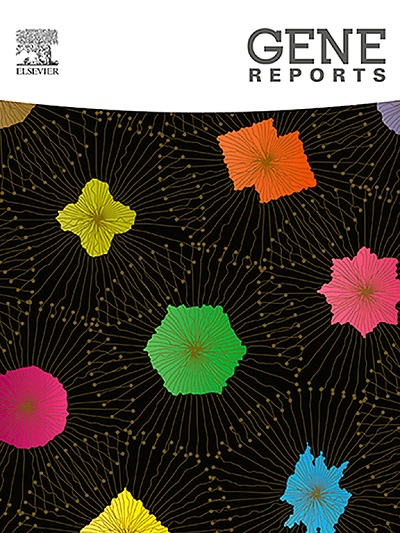先天性角化病的未来:造血干细胞移植还是基因疗法?
IF 1
Q4 GENETICS & HEREDITY
引用次数: 0
摘要
先天性角化不良症(DC)是一种罕见的、易导致多器官癌症的遗传性骨髓衰竭综合征(IBMFs),由端粒生物学缺陷引起。由于种系突变导致造血干细胞祖细胞衰竭,IBMFs表现为无效和受压的造血。临床表现多种多样,严重的临床并发症包括骨髓衰竭、血液肿瘤和实体瘤。骨髓衰竭是死亡的主要原因,但肺纤维化、肝硬化和癌症也是发病和死亡的重要原因。目前,尚无治疗 DC 的特效药物。造血干细胞移植(HSCT)是恢复骨髓功能的唯一确切治疗方法,但不能纠正其他异常。造血干细胞移植可能是受DC和骨髓衰竭影响的患者的一种治疗选择,但由于感染、器官损伤和继发性恶性肿瘤,造血干细胞移植与早期和晚期死亡的高风险相关。然而,由于这种治疗方法存在毒性,而且与其他骨髓造血干细胞移植相比,造血干细胞移植对DC患者的治疗效果不佳,因此建议对DC患者采用改良疗法。因此,人们开始探索基于自体造血干细胞和祖细胞(HSPCs)基因修饰的基因治疗技术。本综述旨在简要介绍目前已知的临床和遗传特征、疾病进展和诊断,并讨论造血干细胞移植和使用 HSPC 基因疗法治疗 DC 的新兴策略。本文章由计算机程序翻译,如有差异,请以英文原文为准。
Dyskeratosis congenita future: Hematopoietic stem cell transplantation or gene therapy?
Dyskeratosis congenital (DC) is a rare, multi-organ cancer-prone inherited bone marrow failure syndrome (IBMFs) caused by defects in telomere biology. IBMFs manifest as ineffective and stressed hematopoiesis owing to germline mutations that cause the failure of hematopoietic stem cell progenitor cells. The clinical presentation is heterogeneous, and serious clinical complications include bone marrow failure, hematological and solid tumors. Bone marrow failure is the main cause of death, although pulmonary fibrosis, hepatic cirrhosis, and cancer significantly contribute to morbidity and mortality. Currently, there is no specific medical treatment for DC. Hematopoietic stem cell transplantation (HSCT) is the only definitive treatment to restore bone marrow function, although it does not correct other abnormalities. HSCT may be a treatment option in subjects affected by DC and bone marrow failure, but it is associated with a high risk of early and late mortality due to infections, organ damage, and secondary malignancies. However, because of the toxicity associated with this treatment and adverse outcomes of HSCT in DC compared to other IBMFs, improved therapies are recommended for DC patients. As a result, gene therapy techniques based on the genetic modification of autologous hematopoietic stem and progenitor cells (HSPCs) have been explored. This review aims to provide a brief description of the currently known clinical and genetic characteristics, disease progression, and diagnosis and discuss HSCT and emerging strategies for using HSPC gene therapy for DC.
求助全文
通过发布文献求助,成功后即可免费获取论文全文。
去求助
来源期刊

Gene Reports
Biochemistry, Genetics and Molecular Biology-Genetics
CiteScore
3.30
自引率
7.70%
发文量
246
审稿时长
49 days
期刊介绍:
Gene Reports publishes papers that focus on the regulation, expression, function and evolution of genes in all biological contexts, including all prokaryotic and eukaryotic organisms, as well as viruses. Gene Reports strives to be a very diverse journal and topics in all fields will be considered for publication. Although not limited to the following, some general topics include: DNA Organization, Replication & Evolution -Focus on genomic DNA (chromosomal organization, comparative genomics, DNA replication, DNA repair, mobile DNA, mitochondrial DNA, chloroplast DNA). Expression & Function - Focus on functional RNAs (microRNAs, tRNAs, rRNAs, mRNA splicing, alternative polyadenylation) Regulation - Focus on processes that mediate gene-read out (epigenetics, chromatin, histone code, transcription, translation, protein degradation). Cell Signaling - Focus on mechanisms that control information flow into the nucleus to control gene expression (kinase and phosphatase pathways controlled by extra-cellular ligands, Wnt, Notch, TGFbeta/BMPs, FGFs, IGFs etc.) Profiling of gene expression and genetic variation - Focus on high throughput approaches (e.g., DeepSeq, ChIP-Seq, Affymetrix microarrays, proteomics) that define gene regulatory circuitry, molecular pathways and protein/protein networks. Genetics - Focus on development in model organisms (e.g., mouse, frog, fruit fly, worm), human genetic variation, population genetics, as well as agricultural and veterinary genetics. Molecular Pathology & Regenerative Medicine - Focus on the deregulation of molecular processes in human diseases and mechanisms supporting regeneration of tissues through pluripotent or multipotent stem cells.
 求助内容:
求助内容: 应助结果提醒方式:
应助结果提醒方式:


